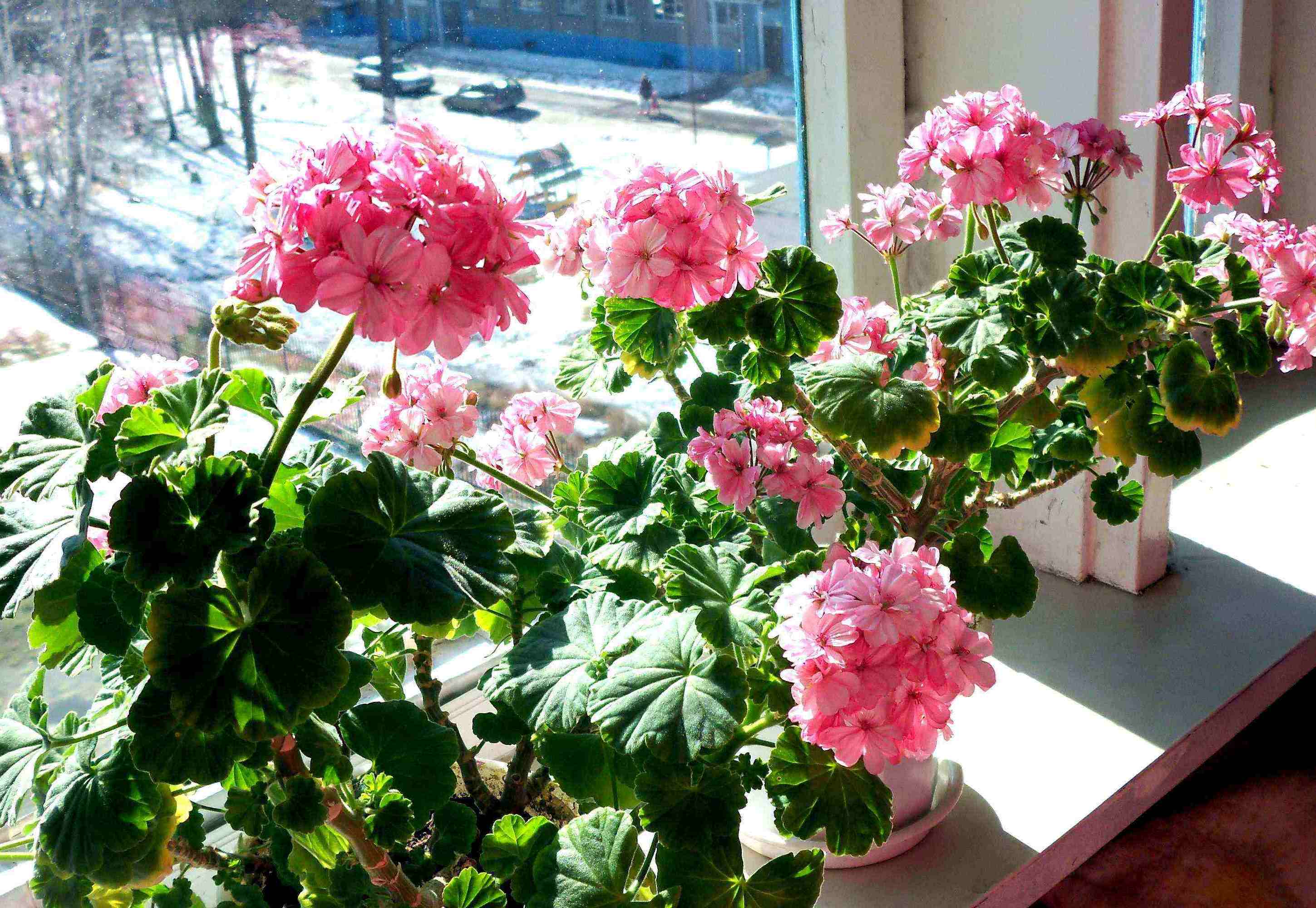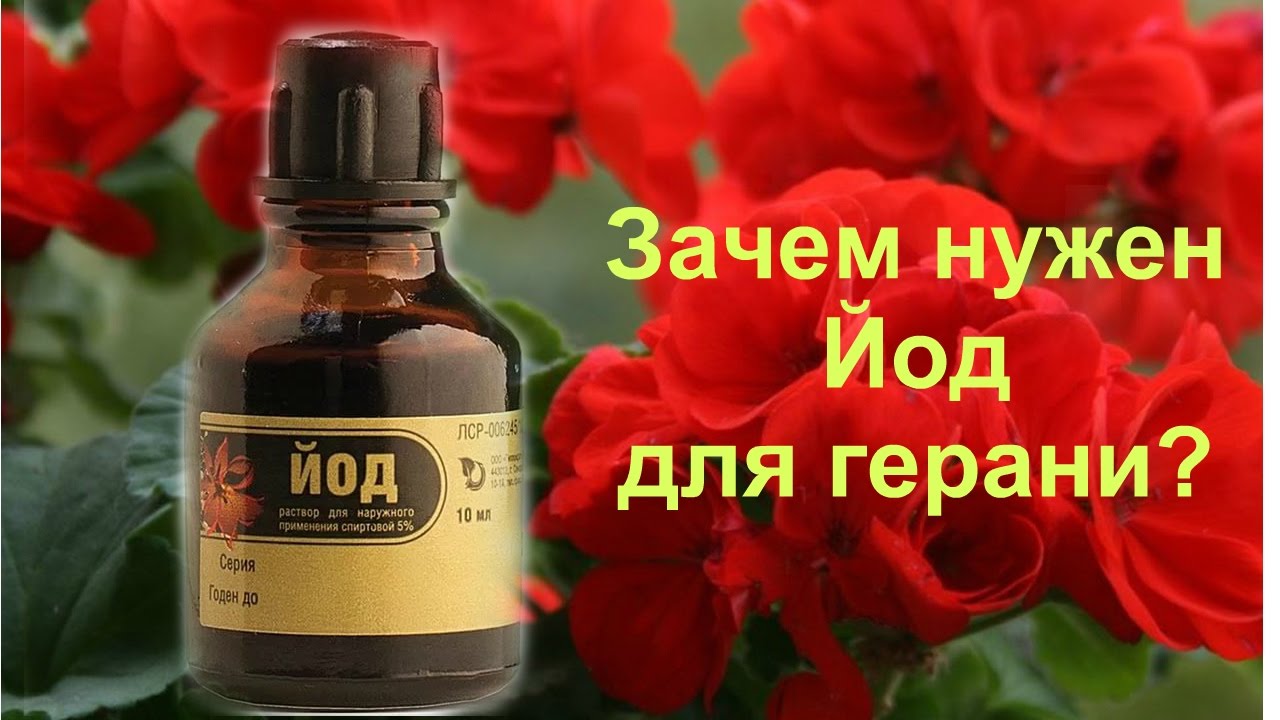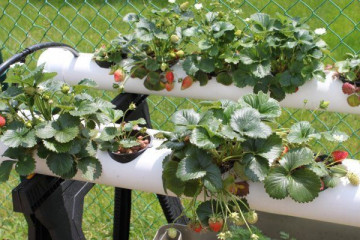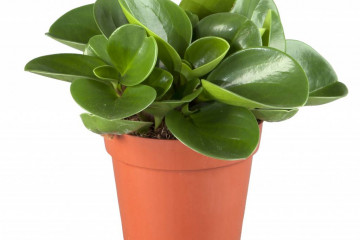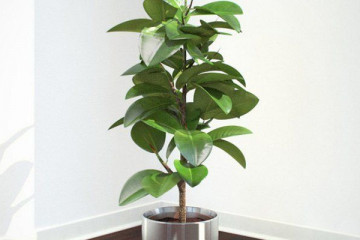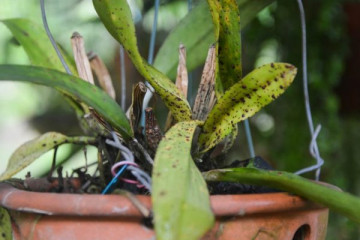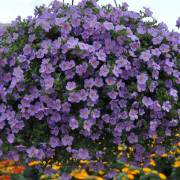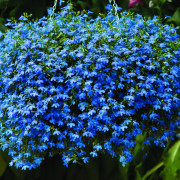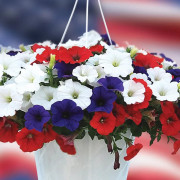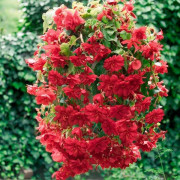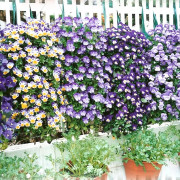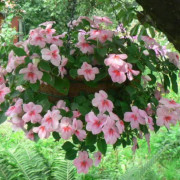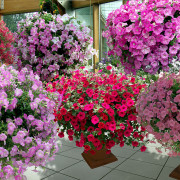Care for ampelous geranium or ivy pelargonium: diseases and pests
Content:
Geranium is famous for its elegant inflorescences, is highly valued for its long flowering period, medicinal properties, unpretentiousness and easy care. Geranium is a perennial flower with a Latin name, native to South Africa. It has remained the most popular throughout the world for many years. Home geranium (care and cultivation features are described below) the plant is unpretentious, but certain conditions are needed for lush inflorescences.
Geranium leaves are smooth, bright green and shaped like ivy leaves, and the inflorescences reach up to 20 cm in diameter. In order for a flower to please with its spectacular appearance, you need to know some rules and tricks for caring for it. About this and not only - further in the article.
What is the Difference Between Geranium and Pelargonium Ivy
Shield geranium, or as it is also called ampelous ivy-leaved pelargonium, is ideal for forming a hanging garden, decorating a balcony, terrace, window or veranda. Many people believe that geranium and pelargonium are one and the same plant. But this is not so, although they belong to the same Geraniev family. Outwardly, these two sisters are not alike. So what is the difference between Geranium and Pelargonium?
The main difference between these two plants is in leaves and flowers, but their seed pods are identical. If there are bright red, pink or white umbrellas in front of your eyes, this is pelargonium. These two plants were confused as early as the 18th century. scientists, but there is a difference in caring for them. It is very important to know the differences in order to understand how to properly care for indoor pets.
Geraniums are of the following types:
- bordered (zonal);
- ivy;
- angel;
- fragrant;
- royal;
- garden unique;
- tulip;
- dwarf.
Geranium flower care
This unpretentious luxury culture requires minimal, but proper care. Only in this way will she please with bright and lush bouquets.
Plant care and basic rules:
- a lot of sun. Do not be afraid to place the pot of geraniums in direct sunlight, except on especially hot days. At this time, you just need to cover it to avoid burning the leaves;
- hard water for irrigation is unacceptable. In winter, the plant is watered 2 times a week, avoiding getting on the leaves, and in summer it is moderate, but every day;
- drainage at the bottom of the pot is a prerequisite so that there is no stagnation of water;
- small pot. This is necessary for the plant to completely fill it with roots;
- do not spray or rinse foliage. Excessive moisture is dangerous for this crop;
- it is worth considering carefully the choice of soil. Be sure to need a 1: 1: 1 mixture of peat, sand and garden soil;
- it is required to loosen the earth more often. The roots must be fed with oxygen;
- do not forget to feed the culture. Geranium should receive mineral fertilizers (phosphorus and potassium). This beauty does not accept organic fertilizers;
- nitrogen feeding. This is done necessarily after flowering and only once a week from April to September.
These are the main conditions under which the plant will delight with its beauty and dense flowering.
Reproduction of the culture is carried out mainly by cuttings (the most reliable way), but it is also possible with leaves. This is best done in the spring (March-April is the ideal time).
Choosing a location for geraniums
The flower feels very comfortable and well on the windowsill, on the balcony or on the veranda (open air is good for culture), but only on the south side. The most optimal temperature for him is room temperature, since he feels comfortable this way.
In the warm season, the flower pot can be taken out to the veranda or balcony, fresh air will have a positive effect on its development. It is important to remember that the plant does not like drafts.
Air humidity
As noted above, this crop does not like spraying, but this does not mean that it is not necessary to maintain optimal indoor humidity. Below is a table showing the required humidity and air temperature for growing geraniums.
If geranium is adjacent to other indoor plants that need to be sprayed, then it is worth protecting it from moisture when other flowers are irrigated.
Pelargonium ivy diseases
- Gray rot. Formed from waterlogging. Appears in the lowest areas closer to the ground. These are brown spots that spread very quickly. At the same time, Pelargonium does not bloom, and its leaves become dry and yellow. Leaves located closer to the ground are immediately affected, and some plant varieties become completely spotty. To save the plant, you need to treat it with systemic fungicides.
- Alternaria. The earth contains a pathogen. The edges of the leaves are covered with brown spots with a light middle. The plant stops blooming and the leaves turn dry and yellow. You can bring the flower back to life with sufficient ventilation, a loose substrate and proper watering, as well as treating it with ridomil gold or a drug fast.
- Rhizoctonic rot. The soil is infected, an excessive amount of fertilizer in the ground, dry indoor air, strong substrate moisture, little light or excessive watering. At the bottom, dark spots appear on the stems that have an extruded structure. During this period, the culture stops blooming, and its leaves wither and turn yellow. To restore pelargonium, you need to correct the above reasons and treat it with vitaros, rovral or foundationol.
- Withering. Leaves turn yellow, wither and blacken. To avoid the development of the disease is simple: remove plant debris, root the cuttings in a clean substrate, treat with foundation, vitaros, rovral.
- Rust. It occurs due to the ingress of fungus with water or through other infected plants and too wet content. Outlined yellow spots appear on the top of the leaf, and brown spots on the back. The plant does not bloom, the leaves dry, turn yellow and fall off. It is worth minimizing the level of humidity in the air, removing infected leaves and treating with topaz.
- Late blight. Improper care. Geranium does not bloom, rots and withers. Spotting begins to appear on the roots. The rules of ventilation should be observed, use a loose substrate, treat with ridomil.
- Decay of the stem. The reason for this is contaminated soil, dense planting of crops, insufficient lighting, wet substrate, excess nitrogen in the soil. The plant withers, the roots are covered with dark spots, and in some places the mycelium of the fungus appears. It is recommended to treat geraniums with Ridomil Gold or Previcur.
- Curling and mottling of foliage. The virus is in the infected plant. Culture does not bloom. You can help with insecticide treatment.
Ivy Pelargonium pests
In addition to diseases, the plant is affected by pests:
- spider mite. Yellow dots appear on the leaves, after which they dry;
- caterpillars. Holes appear in the leaves;
- whitefly. Eggs are laid on the leaves, which begin to curl;
- aphid. Leaves die off and dry out;
- nematode. Insects feed on the rhizomes of the plant;
- thrips. Growths form on the back of the leaf, after which the greens turn white.
Why ampelous geranium does not bloom
If a florist wants to get abundant flowering, then for this you need to follow some rules for growing geraniums.
Conditions under which the plant does not bloom:
- insufficient lighting;
- insufficient feeding;
- the pot is not completely filled with the root system;
- temperature drops and drafts.
How to feed and fertilize geraniums correctly
This culture rarely needs transplanting and in one pot it can grow for more than one year. Top dressing is done with liquid universal fertilizer for flowering crops 1 time in 2-3 weeks. The solution must be prepared according to the instructions on the package.
Geranium feeding technology:
- mineral fertilizers (potassium and phosphorus) are added 2 times a month. These trace elements prolong flowering and strengthen the culture;
- watering with a solution of heteroauxin or sweet water will help geraniums bloom in the winter. An artificial or natural stimulant must be added weekly;
- ready-made complex fertilizer. Added according to the instructions.
Iodine solution is added like this:
- watering of the soil is carried out;
- when the earth dries up a little, iodine fertilizer is added (pour along the wall of the pot at a distance of at least half a centimeter from the plant).
There are some recommendations for feeding geraniums that will ensure a healthy looking plant and its lush flowering.
The feeding rules are as follows:
- if the culture has been under improper lighting for a long time, then it is not recommended to feed it. First you need to fix this error;
- if a plant is "diagnosed" with a disease or pests are found on it, then first you need to get rid of them, and only then feed them;
- after adding fertilizers, it is worth loosing the soil in the pot to provide oxygen access to the roots;
- you can not fertilize the culture more than 1 time a week;
- for young flowers and in winter, the dose of groundbait should be halved.
Geranium is a versatile beautiful flower that, with proper care, will delight with lush inflorescences and a pleasant aroma. Now, knowing how to care for this beautiful plant (geranium blooms better with proper care), there should be no problems with growing it.
